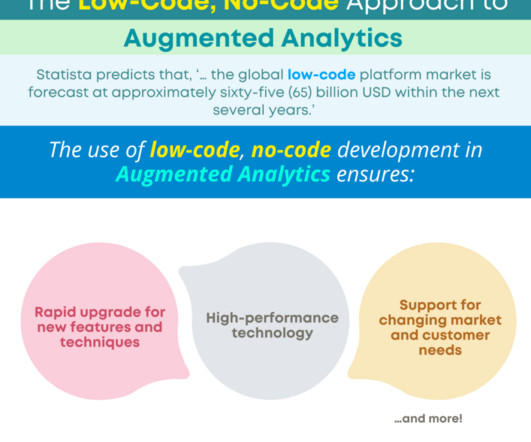Why Low-Code No-Code is Important for BI Tools!
Smarten
FEBRUARY 20, 2024
Statista predicts that, ‘… the global low-code platform market is forecast at approximately sixty-five (65) billion USD within the next several years.’ This explanation provides a simple understanding of both approaches and, for the purpose of this article, we will not dive into the details.














Let's personalize your content